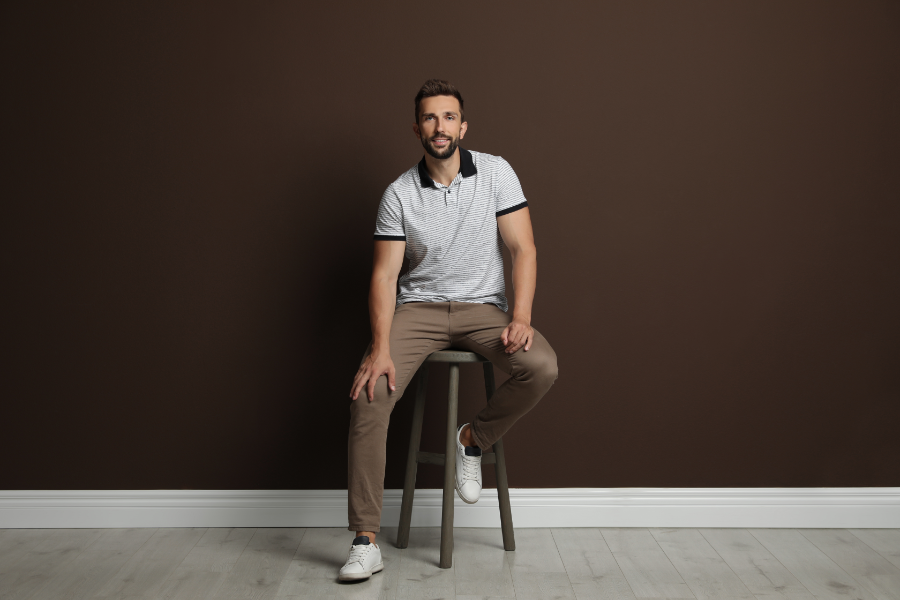If you work a desk job, you’re probably used to sitting for long periods. Unfortunately, this can cause back pain and muscle stiffness. While many ergonomic office seating options are available, some people may consider using a stool instead of an ergonomic office chair.
So, if you’re confused about whether stools are good for your back, Trust me, you’re not alone. When I was first recommended to switch to stool I was surprised and had negative opinions. However, with time, I witnessed wonders as my posture improved. I significantly felt better blood circulation in my lower body than when I used to stick to the traditional office chair.
Sitting on a Stool, Good or Bad?
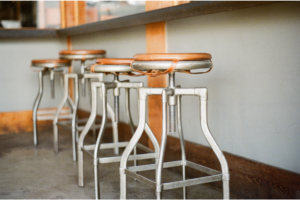
If you’ve ever wondered Is sitting on a stool bad for your back!, the answer is Big NO.
As stools do not contain a backrest, you must sit up straight and engage your core muscles to maintain good posture. When you sit on a stool without a backrest, your spine and pelvis will naturally assume the most neutral position, the natural S curve. This position puts the least pressure on your spine and encourages a straight, flexible back. The natural S curve is the best position for good posture since it helps to prevent slouching and stiffness in your back.
This helps reduce pressure on your spine, alleviate tension and pain in your back, and even strengthen your core muscles over time.
So, contrary to popular belief, sitting on a stool can actually be a good alternative to an office chair.
Sitting on Stool vs Chair: Which one is most effective?
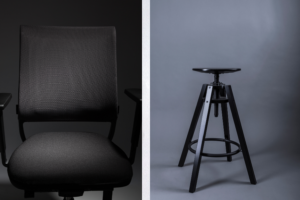
Using ergonomic chairs for Office or daily life is a very normalized act practiced by many nowadays. But are stools a better choice? Do they outnumber the benefits offered by chairs? Is it good for your posture?
Investing in either of these can have numerous benefits, but the outcomes can differ significantly depending on your needs. It’s important to determine what your specific requirements are in order to make the best decision for your body.
Stools are particularly useful in situations that require mobility, quick transitions between sitting and standing, or minimal obstruction to movement. For instance, in professions that demand constant movement, such as hairdressers, baristas, or healthcare workers, stools can be highly effective.
While on the other hand, Chairs are the preferred option for professions that involve extended periods of seated work, comfort, and ergonomic support. For example, In office environments, where employees may spend hours at a desk, ergonomic office chairs provide crucial lumbar support, adjustable features, and cushioned seating to reduce the risk of discomfort and enhance productivity.
What ergonomic Chairs Offer?
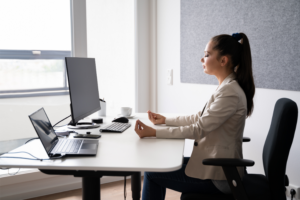
- Comfort: Chairs are generally more comfortable for extended periods of sitting, as they often come with cushioned seats and backrests that support your back and lower body. If you’re struggling with any kind of chronic pain or illness then chairs might be what you’re looking for.
- Posture: As chairs provide numerous backrests, this helps in maintaining your posture just the way you want. Adjustable backrests and water drop ends not only aids in curing chronic pain but also provides comfort and ease.
- Ergonomics: Many chairs are designed with ergonomic features to promote proper posture and reduce the risk of back and neck strain, making them a great choice for workspaces.
- Durability: Chairs are typically built to withstand regular use and can last a long time, especially if made from high-quality materials.
What Ergonomic Stools Offer?

- Space-Saving: Stools are often more compact and lightweight than chairs, making them an excellent choice when space is limited or when you need additional seating without crowding a room.
- Easy to Use: Stools are a perfect easy use, They are lightweight, hence can be moved around easily. Not only that but you can also easily get up to take walking breaks without nudging things over.
- Posture Friendly: Unlike chairs, stools don’t offer a backrest, forcing your spine to stay alert on its own. This helps to avoid slouching or lazing around as backrests may make you too comfortable and somewhat lazy during your work sessions. .
- Body Movement: Unlike chairs, stools don’t cage you in a certain sitting manner. You can move around easily, and sit in any direction you want. This allows free body movement, eradicating any possibility of body fatigue or stiffness. The choice between chairs and stools can be a tough one to make, as it depends on a variety of factors, Your specific needs, the amount of space you have available, your comfort preferences, and the overall aesthetic you want to achieve in your environment will all play a role in determining which option is best for you.
How sitting on a stool can fix your back issues?
Sitting on a stool can potentially help alleviate back issues for some individuals, but it’s essential to understand that the effectiveness of using a stool to address back problems depends on the nature and underlying causes of the issues.
Here I have penned down some ways in which sitting on a stool can have a positive impact on your back:
Promotes Active Sitting
Stools encourage a more active sitting posture. Unlike traditional chairs with backrests, stools require you to engage your core muscles and maintain an upright posture to stay balanced. This active sitting can help you strengthen your muscles in your lower back and abdominal area, potentially reducing the risk of back pain caused by weak or imbalanced core muscles.
✅ Recommended Read: 90 degree sitting position: A correct posture guide
Improves Posture
Stools can help improve your posture by forcing you to sit up straight and maintain a neutral spine position. This can be particularly beneficial for folks who slouch or have a tendency to hunch over while working. Proper posture can reduce stress on the back and help alleviate discomfort associated with poor alignment.
Reduces Pressure on the Lower Back
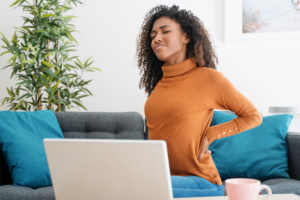
While using a stool when working remotely, I found that sitting on a stool distributes less pressure on the lower back compared to chairs with backrests. This can be particularly helpful for those with specific lower back issues, such as herniated discs or sciatica, as it may reduce the pressure on the affected area.
Enhances Mobility
Stools allow for more freedom of movement while sitting. You can easily shift, twist, or stand up from a stool, which can help reduce stiffness and tension in your back. This is especially helpful for professions that require frequent transitions between sitting and standing, like artists, Barbers or healthcare workers.
To put it simply, Sitting on a stool can help fix back issues by promoting active sitting, improving posture, enhancing mobility, and reducing pressure on the lower back for some individuals. It can be a valuable option, especially when used as part of an ergonomic setup that includes proper desk and chair height, but its effectiveness depends on the individual and the specific nature of their back issues.
FAQ’s
What is the best posture to sit on a stool?
When sitting on a stool, it’s important to maintain good posture to avoid discomfort or injury. You should sit with your back straight, your shoulders relaxed, and your feet placed firmly on the ground.
Can you sit all day on a stool?
It’s preferably not the most comfortable or healthy choice. Stools typically do not offer the same level of support as chairs and can lead to a number of health problems, including back pain, poor posture, reduced circulation, and even an increased risk of cardiovascular disease and certain types of cancer.
Is it better to sit without a backrest?
While sitting with a backrests makes you comfortable, offers a good posture and makes things easy. But you can easily sit without one by carefully considering these factors.
- Make sure you sit in a proper position
- Don’t slouch
- Avoid sitting for prolonged periods
- Take frequents breaks
And lastly make sure to use a footrest.
How to avoid lower back pain?
Lower back pain can be caused by a variety of factors, including poor posture, sedentary lifestyle, and lack of exercise. Here are some tips to help you avoid lower back pain:
- Maintain good posture
- Take breaks
- Get up and move around every 30 minutes to an hour
- Exercise regularly
- Use proper lifting techniques
- Sleep well
Conclusion
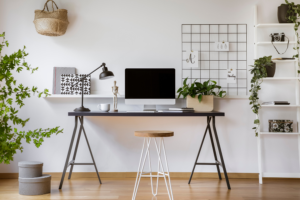
It’s important to carefully consider the impact of sitting on a stool on your back health. While stools may seem like a good idea for promoting a more active and dynamic sitting posture, they can also have potential drawbacks.
Prolonged and improper use of stools may lead to discomfort and back pain, especially for individuals who already have preexisting back issues. So, it’s crucial to weigh the pros and cons of using a stool before making a decision that could have long-term consequences for your back health.
Adam had a bad experience with his 5 years of job life. He later decided to start his own initiatives and now pursuing his passion for years. Working as a founder and senior editor at Workplace Ambitions is like a dream come true – sharing stuff related to the things he faced earlier and helping the community achieve their work-life dreams. Reach out to him at Adam@workplaceambitions.com.
